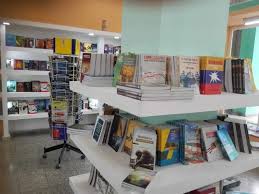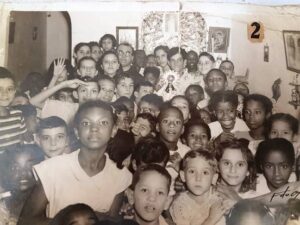The economy of culture: the difficult challenge of producing printed books (+audio)


«An open book is a talking brain, closed, a waiting friend, forgotten, a forgiving soul, destroyed, a weeping heart».
Hindu proverb
When dealing with issues related to culture, we do not always associate these issues with the field of economics; however, the practice of examining the production of culture through the prism of economics is of fundamental importance.
The production of cultural goods is a complex process that confronts the act of creation and its requirements of free expression and experimentation with its transformation into a commodity.
See also: http://www.cubadebate.cu/especiales/2014/10/24/cuba-politica-cultural-y-economia-de-la-cultura/

However, the book, as a cultural product, is a necessary element for the education and development of the human being, a bearer of identity, values and meanings, so it is not just a commodity or consumer good.
Its importance is enhanced by its capacity to preserve, transmit and disseminate knowledge, ideas and information. «The Argentinean writer Jorge Luis Borges reflected on several occasions on what the book is and its importance.
«Following his discursive line, there is no need to go any further. For Borges, the book is one of the possibilities of happiness that we human beings have.
«He adds that it is the most amazing instrument that man has created because all the others are extensions of his body, but the book is an extension of his memory and imagination. Without books we would not be the same; it has a cultural value but also a ludic value,» says Norge Céspedes, journalist, writer and editor.

Several processes are involved in the production, dissemination, marketing and consumption of books in Cuba. With the collapse of the socialist camp and the tightening of the economic blockade imposed by the United States, Cuba faced the worst economic crisis in its history. The scarcity of resources for artistic creation translated into less production, in poorer quality media.
See also: http://scielo.sld.cu/pdf/ralc/v8n19/2411-9970-ralc-8-19-57.pdf
The book industry channelled the effects of the crisis by abruptly reducing the number of titles published and their print runs, which favoured Cuban authors, and by increasing book prices. Between 1990 and 1993 there was a sharp decline in the country’s publishing output.

Only 568 titles were produced that year, with printings barely exceeding two million copies. These effects were also felt in Matanzas.
To alleviate the negative effects of the decrease in the number of copies per title, it was proposed to send a significant number of books to the libraries of the public network and priority institutions. Such adverse circumstances forced a redefinition of Cuban publishing policy.
The book industry began to operate on a self-financing basis and print runs were reduced. Like all cultural activity in Cuba, the publishing industry remained subsidised by the state.
Among other elements that prevented a greater decline in the consumption of literature was the previous existence of millions of copies, accumulated in homes and libraries. The emergence of new themes, narratives and discourses, together with the interest of foreign publishers and national authors in inserting Cuban literature into foreign market circuits, allowed the publication of some titles outside Cuba.
See also: https://www.radiorebelde.cu/noticia/la-produccion-editorial-cuba-20170425/
The recovery of the book industry began in 1994. Gradually, the number of titles and copies increased and catalogues were diversified with the increasing publication of foreign authors.
…ONLINE AUDIO.

See also: http://www.ahs.cu/?p=35388
However, Cuba’s current economic reality also poses a challenge in terms of book publishing. «Today, printing a colour cover of a conventional, small book costs around 47,000 pesos.
«That’s impressive. We are at a time when literary copyright has increased, which automatically causes the cost of the book to rise. Following that logic, we could find a book that can cost 160 pesos if we take the cost of production into account.
Listen here: https://www.ivoox.com/alfredo-zaldivar-eterno-vigia-audios-mp3_rf_103066133_1.html
«Fortunately, the Ministry of Culture and the Book Institute maintain the policy of subsidising literature; for example, a text for children should not exceed 25 pesos, and books costing 150 or 160 pesos are sold for almost never more than 70 pesos», says Alfredo Zaldívar Muñoa, poet, winner of the National Publishing Prize and director of Ediciones Matanzas.
See also: http://www.tribuna.cu/cultura/2021-03-25/exponen-retos-y-esfuerzos-del-sistema-del-libro-en-cuba
Faced with this situation, several alternatives are being put into practice to prevent literary consumption from diminishing or being distorted.
See also:
http://scielo.sld.cu/scielo.php?script=sci_arttext&pid=S0252-85842014000100014
A correct promotion, communication and marketing strategy, the creation of spaces for exchange between readers and writers and the personnel associated with the existence of the book, and the extension of socialisation and production opportunities to the digital context are some of these initiatives.
Written by Jessica Mesa.




